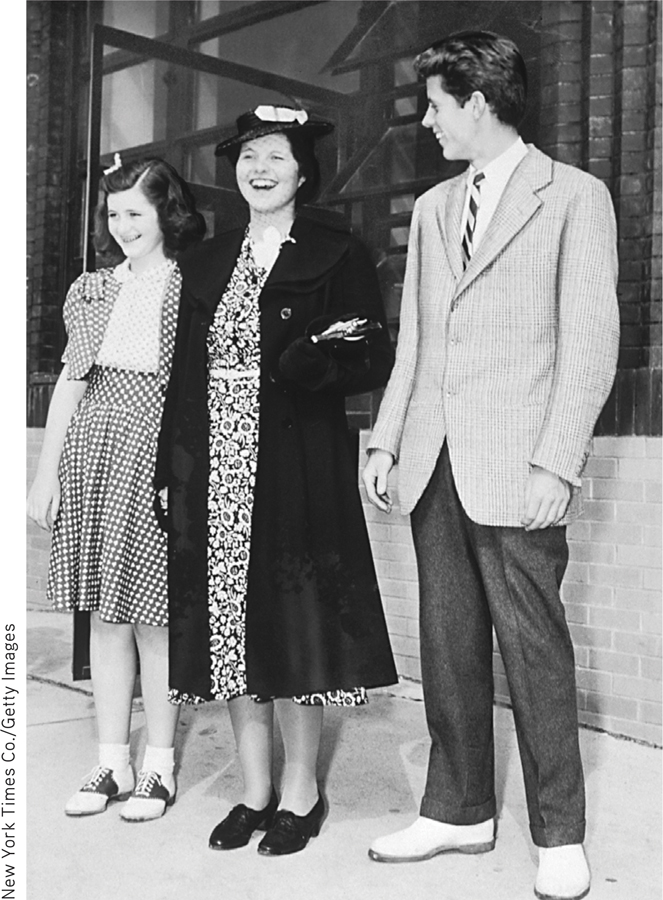56.3 Psychosurgery

Failed lobotomy This 1940 photo shows Rosemary Kennedy (center) at age 22 with brother (and future U.S. president) John and sister Jean. A year later her father, on medical advice, approved a lobotomy that was promised to control her reportedly violent mood swings. The procedure left her confined to a hospital with an infantile mentality until her death in 2005 at age 86.
Because its effects are irreversible, psychosurgery—surgery that removes or destroys brain tissue—is the most drastic and least-used biomedical intervention for changing behavior. In the 1930s, Portuguese physician Egas Moniz developed what became the best-known psychosurgical operation: the lobotomy. Moniz found that cutting the nerves connecting the frontal lobes with the emotion-controlling centers of the inner brain calmed uncontrollably emotional and violent patients. In what would later become, in others’ hands, a crude but quick and easy procedure, a neurosurgeon would shock the patient into a coma, hammer an icepick-like instrument through each eye socket into the brain, and then wiggle it to sever connections running up to the frontal lobes. Between 1936 and 1954, tens of thousands of severely disturbed people were “lobotomized” (Valenstein, 1986).
Although the intention was simply to disconnect emotion from thought, a lobotomy’s effect was often more drastic: It usually decreased the person’s misery or tension, but also produced a permanently lethargic, immature, uncreative person. During the 1950s, after some 35,000 people had been lobotomized in the United States alone, calming drugs became available and psychosurgery became scorned, as in the saying sometimes attributed to W. C. Fields that “I’d rather have a bottle in front of me than a frontal lobotomy.”
Today, lobotomies are history. But more precise, microscale psychosurgery is sometimes used in extreme cases. For example, if a patient suffers uncontrollable seizures, surgeons can deactivate the specific nerve clusters that cause or transmit the convulsions. MRI-guided precision surgery is also occasionally done to cut the circuits involved in severe obsessive-compulsive disorder (Carey, 2009, 2011; Sachdev & Sachdev, 1997). Because these procedures are irreversible, they are controversial and neurosurgeons perform them only as a last resort.
